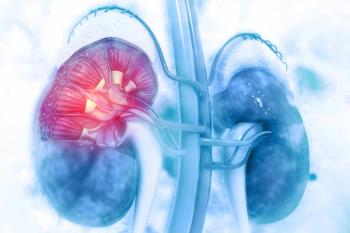
Checkpoint Inhibitors Highly Active in Metastatic RCC
A study shows RCC patients overall response rate did not decline from the first‐line to the fourth‐line of IO therapy.
Response to immunotherapy with checkpoint inhibitors among patients with metastatic renal cell carcinoma (RCC) did not diminish when given as first-line therapy compared with fourth-line therapy, according to a retrospective study published in Cancer.
Additionally, researchers led by Steven M. Yip, MD, MSc, of Tom Baker Cancer Center, Calgary, Canada, showed that the International Metastatic Renal Cell Carcinoma Database Consortium (IMDC) risk category criteria appropriately stratified patients into risk categories.
“We believe the results of the current study have established efficacy benchmarks regarding overall response rates and duration of treatment that can be used for clinical trial design and patients counseling,” Yip and colleagues wrote.
The retrospective
In 461 evaluable patients, the overall response rate was 27%. Among the 49 patients treated with first-line nivolumab and ipilimumab, the overall response rate was 31%. This increased slightly to 39% in patients treated with combination (programmed death-ligand 1 [PD-L1] inhibition) and (vascular endothelial growth factor [VEGF] inhibition), and to 40% in patients treated with a single-agent PD-L1 inhibitor. The median duration of treatment was 8.3 months, 14.7 months, and 8.3 months for these groups, respectively.
Overall response rates were 22% for second-line treatment, 24% for third-line treatment, and 26% for fourth-line treatment with a median duration of treatment 5.7 months, 6.2 months, and 8.3 months, respectively.
The researchers noted that the duration of treatment was similar to that seen with nivolumab in the CheckMate 025 trial.
“However, the duration of treatments for the third-line and fourth-line settings appear to be somewhat longer at 6.2 months and 8.3 months, respectively,” the researchers wrote. “This observed longer duration of treatment may be influenced by clinicians' consideration of treatment beyond disease progression. However, pseudoprogression is reported to occur in only 6%–12% of cases. Alternatively, it could be due to the lack of availability of further lines of therapy in some jurisdictions, less radiological imaging, or fewer rigorous treatment algorithm stopping rules in the general population compared with a clinical trial.”
Looking at patients according to IMDC risk category, the median overall survival rates for favorable-, intermediate-, and poor-risk groups were as follows. For first-line, not reached for all groups. For second-line, not reached, 26.7 months, and 7.4 months (P < .0001). For third line, 36.1 months, 28.2 months, and 11.1 months (P = .016) and fourth line, not reached, not reached, and 6.7 months, (P = .047).
“At the time of last follow-up, no data were available regarding patients treated beyond disease progression, but this currently is being investigated,” the researchers wrote. “Future efforts will be required to examine PD-L1 status and its association with outcomes in patients treated with immune-oncology.”
Newsletter
Stay up to date on recent advances in the multidisciplinary approach to cancer.
















































































